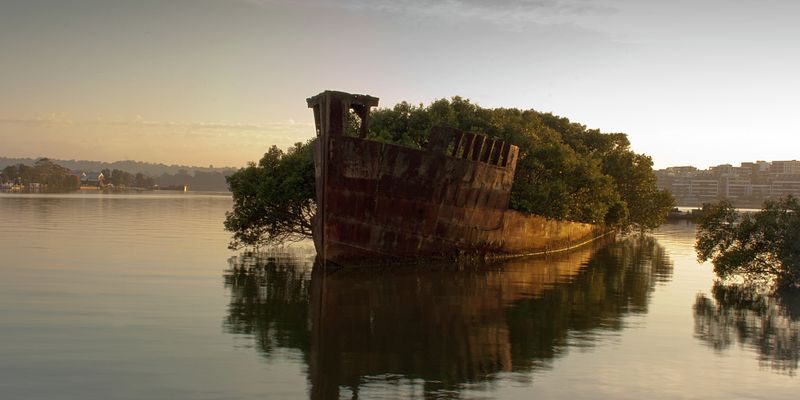Nature has orchestrated a remarkable transformation aboard the SS Ayrfield, a distinguished cargo freighter now transformed into a captivating floating forest in Australia’s Homebush Bay. Despite its age, this century-old vessel remains a poignant relic of maritime history, with its weathered hull now embraced by vibrant vegetation—a powerful testament to nature’s inexorable reclaiming of its territory.


Once a bustling industrial center, Homebush Bay’s decline was precipitated by contamination from toxic waste, prompting its transformation into a commercial and residential suburb of Sydney. The area experienced a resurgence following the economic boom fueled by the 2000 Olympic Games. However, traces of its past as a thriving trading port persist, exemplified by the presence of four abandoned freighters slowly succumbing to rust in its waters. Once vital conduits for coal, oil, and wartime provisions, these vessels were eventually retired and left to decay where they once traversed.
Among these relics, the SS Ayrfield emerges as a remarkable sight. Against all odds, this vessel has become an unexpected host to a thriving mangrove forest. Mangrove trees now take root in the ship’s hull, their roots entwining with its metal frame, gradually corroding the once-stalwart structure. Originally constructed in 1911, the SS Ayrfield has weathered many storms, including World War II, yet it now faces its most formidable adversary: the relentless force of nature.


The remarkable metamorphosis of the SS Ayrfield serves as a poignant reminder of nature’s unstoppable ability to reclaim even the most resilient symbols of human industry and innovation.


